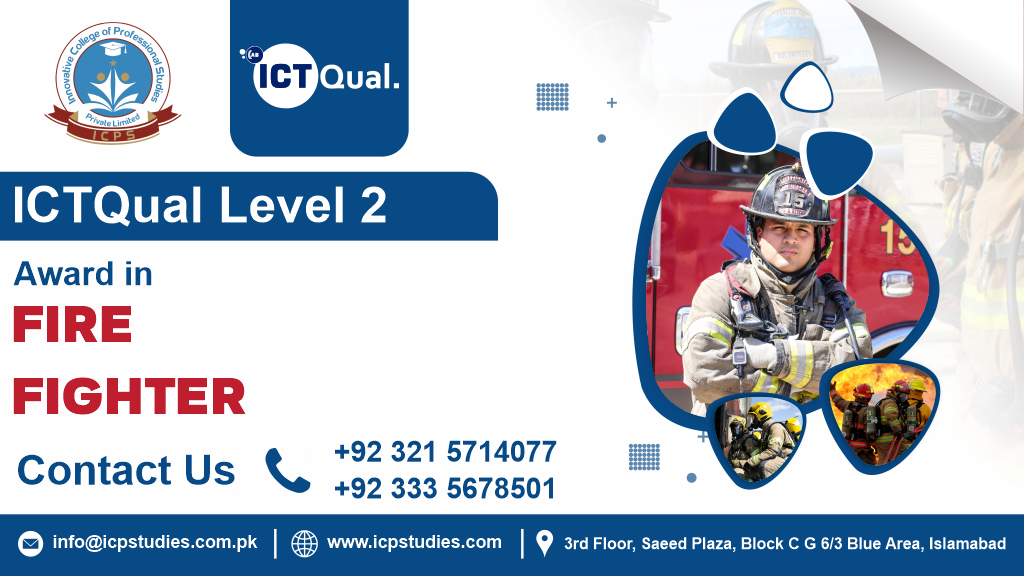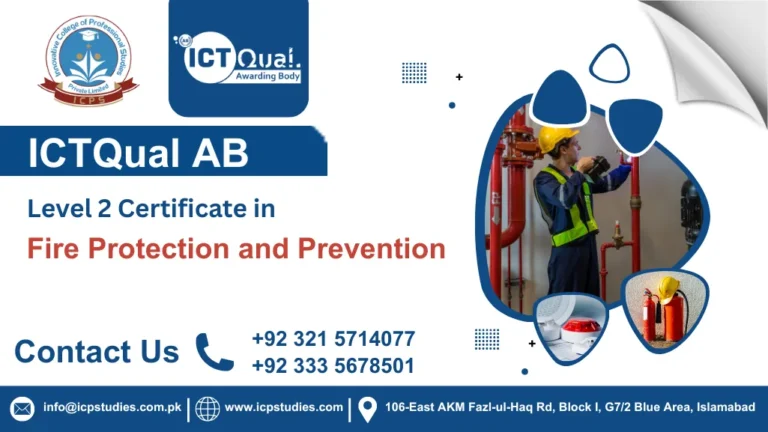Firefighters embody courage, readiness, and a commitment to protecting lives and property in the face of danger. Behind their heroic deeds lies rigorous training and specialized skills that prepare them for the complexities of firefighting and rescue operations. The Level 2 Award in Firefighter certification stands as a testament to their preparation and proficiency in meeting the challenges of this vital profession.
The Level 2 Award in Firefighter is a comprehensive training program designed to equip individuals with the essential knowledge and skills required to serve as competent firefighters. This certification serves as a foundational qualification, providing a pathway for aspiring firefighters to enter the profession and for current firefighters to enhance their capabilities.
Level 2 Award in Firefighter represents a critical milestone in the journey of those dedicated to safeguarding lives and property from the ravages of fire and other emergencies. It embodies the commitment to professionalism, preparedness, and service excellence that defines the firefighting profession.
All About ICTQual Level 2 Award in Firefighter
Course Overview
The Level 2 Award in Firefighter is a specialized certification designed to provide individuals with foundational training and skills necessary to work effectively as firefighters. This qualification is typically structured to equip candidates with the essential knowledge and capabilities required for firefighting and emergency response operations in various settings.
The Level 2 Award in Firefighter is a crucial certification for individuals pursuing a career in firefighting and emergency response. It not only prepares them with essential skills and knowledge but also instills a commitment to safety, teamwork, and service to the community. By completing this certification, individuals demonstrate their readiness to respond to emergencies and contribute effectively to public safety efforts.
Study Units
- Fire Behavior and Dynamics
- Firefighting Equipment and Tools
- Fire Suppression Techniques
- Hazardous Materials Awareness
- Health and Safety Practices
- Emergency Response and Incident Management
Admission Criteria
The Level 2 Award in Firefighter course is designed for individuals who aspire to pursue a career in firefighting and emergency response services. This comprehensive training program is particularly suitable for:
- Aspiring Firefighters: Individuals who are passionate about serving their community and protecting lives and property from the devastating effects of fires and emergencies.
- Career Changers: Those looking to transition into a rewarding career in firefighting from other professions or industries.
- Young Adults: Graduates or school leavers who are keen to start a career in emergency services and want to make a meaningful impact in their communities.
- Current Firefighters: Firefighters who may already have experience but seek formal training and certification to enhance their skills, advance their career prospects, or comply with professional development requirements.
- Emergency Response Personnel: Individuals involved in related fields such as rescue teams, disaster management, or industrial fire brigades seeking to expand their knowledge and capabilities in firefighting.
- Volunteer Firefighters: Individuals currently volunteering in fire services who wish to formalize their skills and knowledge with recognized certification.
- Health and Safety Professionals: Professionals in occupational health and safety roles who want to broaden their expertise to include firefighting and emergency response.
- Community Leaders: Individuals interested in playing a crucial role in community safety and emergency preparedness efforts.
Benefits of Pursuing the Course:
- Comprehensive Training: Provides thorough training in fire behavior, firefighting techniques, rescue operations, hazardous materials awareness, and emergency response management.
- Career Advancement: Enhances career opportunities within firefighting departments, emergency services agencies, and related industries.
- Personal Development: Develops critical skills in teamwork, leadership, problem-solving, and decision-making under pressure.
- Community Service: Enables individuals to contribute effectively to public safety and emergency response efforts, making a positive impact on their communities.
Ideal Candidate
Entry requirements for the Level 2 Award in Firefighter course may vary depending on the training provider and the specific program structure. However, typical entry requirements may include:
- Minimum Age: Candidates are usually required to be at least 18 years old due to the physical and demanding nature of firefighting duties.
- Educational Qualifications: A minimum level of education may be required, such as completion of secondary school education or an equivalent qualification. Some programs may have specific subject requirements or prerequisites in science or mathematics.
- Physical Fitness: Firefighting is physically demanding, so candidates may need to demonstrate a certain level of physical fitness and agility. This may involve passing a physical fitness test conducted by the training provider.
- Health Requirements: Candidates may need to meet certain health standards to ensure they can safely perform firefighting duties. This may include medical examinations or assessments to assess general health and fitness for the role.
- Legal and Background Checks: Depending on the jurisdiction and the policies of the training provider, candidates may need to undergo background checks, including criminal record checks, to ensure suitability for the role of a firefighter.
- Driving License: Some programs may require candidates to hold a valid driver’s license, particularly if driving emergency vehicles is part of the training or job responsibilities.
- Language Proficiency: Proficiency in the language of instruction (often English) may be required to understand course materials, instructions, and communicate effectively during training and emergency situations.
- Additional Requirements: Depending on the specific program or training provider, there may be additional requirements such as completion of prerequisite courses, certifications in first aid or CPR, or prior experience in related fields such as emergency services or volunteer firefighting.
Learning Outcome
Fire Behavior and Dynamics
- Understanding Fire Behavior: Gain knowledge of how fires start, spread, and behave under different conditions (e.g., fuel types, weather influences).
- Predicting Fire Development: Learn to anticipate changes in fire behavior based on environmental factors and fire dynamics.
- Applying Fire Behavior Knowledge: Utilize understanding of fire behavior to make informed decisions during firefighting operations, ensuring effective fire control and safety.
Firefighting Equipment and Tools
- Equipment Familiarization: Become proficient in the use and maintenance of firefighting tools and equipment such as hoses, nozzles, axes, and thermal imaging cameras.
- Handling and Safety Practices: Demonstrate safe handling practices to prevent accidents and maintain equipment readiness.
- Effective Deployment: Apply knowledge of equipment capabilities to deploy resources efficiently in firefighting and rescue scenarios.
Fire Suppression Techniques
- Technique Selection: Learn various fire suppression methods including direct attack, indirect attack, and defensive firefighting strategies.
- Application Skills: Develop practical skills in applying fire suppression techniques to control and extinguish fires safely and effectively.
- Adaptation to Conditions: Adapt firefighting tactics based on fire behavior, building structure, and environmental factors to achieve successful outcomes.
Hazardous Materials Awareness
- Identification and Classification: Recognize hazardous materials commonly encountered in firefighting incidents and their associated risks.
- Safety Precautions: Understand safety protocols for handling hazardous materials to minimize exposure risks for firefighters and the public.
- Communication and Reporting: Communicate effectively with hazardous materials response teams and authorities, providing critical information to support incident management.
Health and Safety Practices
- Personal Protective Equipment (PPE): Select and use appropriate PPE to protect against fire, heat, smoke, and hazardous materials.
- Health Risks Mitigation: Identify potential health hazards in firefighting environments and implement measures to reduce risks (e.g., heat stress, respiratory protection).
- Occupational Safety Compliance: Adhere to occupational health and safety regulations and standards to maintain a safe working environment for firefighters and others involved in emergency response.
Emergency Response and Incident Management
- Incident Size-up: Conduct rapid assessment of emergency situations to determine appropriate response strategies.
- Coordination and Leadership: Demonstrate effective teamwork and leadership skills in coordinating emergency response efforts.
- Resource Management: Manage resources efficiently during incidents, including personnel, equipment, and logistical support.
- Documentation and Evaluation: Document incident details and outcomes for post-incident analysis and improvement of response protocols.
FAQs about ICTQual Level 2 Award in Firefighter







